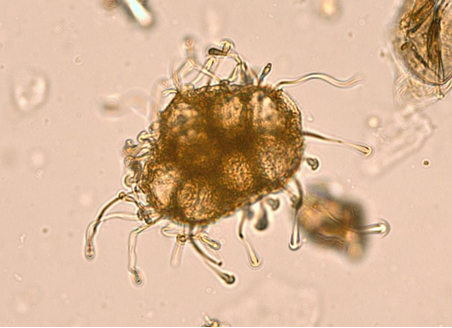Ever since oil and gas exploration began in the Nordic seas, remains of the free-floating freshwater fern Azolla were occasionally identified in varying abundance in mid-Eocene sediments. Typically, these were thought to have been sourced from nearby landmasses and further largely ignored.
Yet, in 2004, one of the discoveries of IODP 302 ACEX, drilling the central Arctic Ocean, included the finding of mass-occurrences of Azolla remains, marking the end of the Early Eocene (~49 Ma). Moreover, it was shown that the free-floating freshwater fern grew in situ , episodically densely covering sustained fresh surface ocean waters, rather than being the result of transportation. Later, it was shown that no less than five Azolla species had coeval blooms in the Arctic and Nordic seas. A likely trigger for these widespread Azolla blooms is high precipitation prevailing during the super warm, high pCO 2'Hothouse' climates of the Early Eocene Climatic Optimum (EECO).
Conspicuously, however, the timing of, and notably the end of the Azolla phase (~49.5-48.5 Myrs) coincides with the earliest signs of the onset of the transition from the Early Eocene Hothouse (end of EECO) towards the modern icehouse Earth. Over the past decades, the team has explored if sustained growth of Azolla on the surface of major anoxic oceanic basins may have contributed to decreasing atmospheric pCO2 levels via burial of Azolla -derived organic matter. Indeed, the combined results of eg, organic carbon, sulphur, nitrogen content and 15 N and 13 C measurements of sediments from the Azollainterval illustrate the potential contribution of nitrogen fixation in a euxinic stratified basin, up to 3.5 10 18 g carbon for the Arctic alone (eg, Speelman et al, 2009). This would result in a 470 ppm drawdown of pCO 2 under Eocene conditions, indicating that indeed, the Nordic Azolla blooms may have had a significant effect on global atmospheric pCO 2 levels through enhanced burial of organic matter.

Azolla massuale
